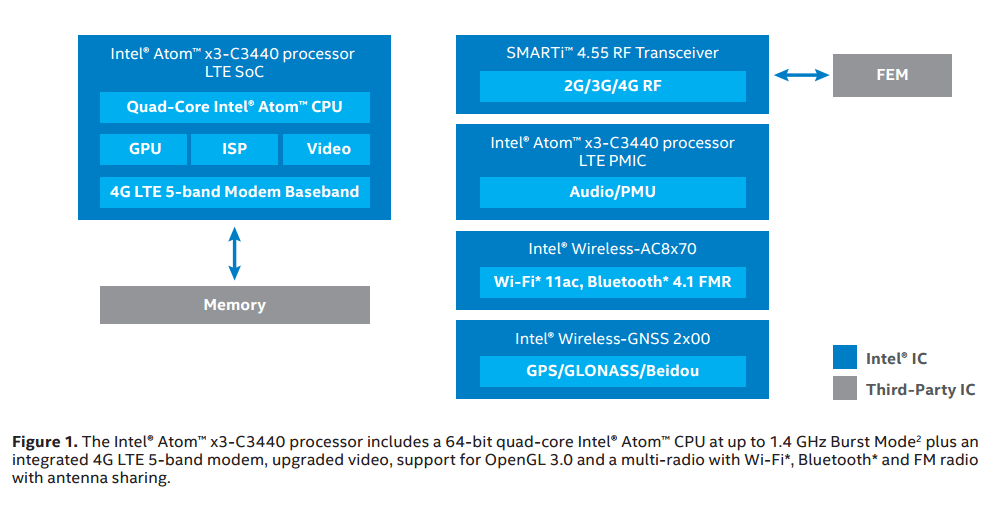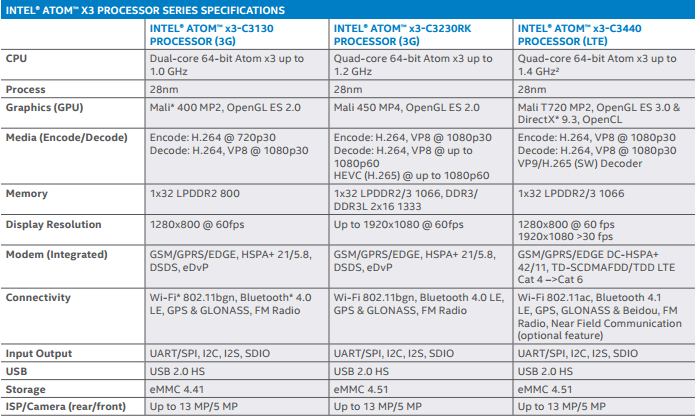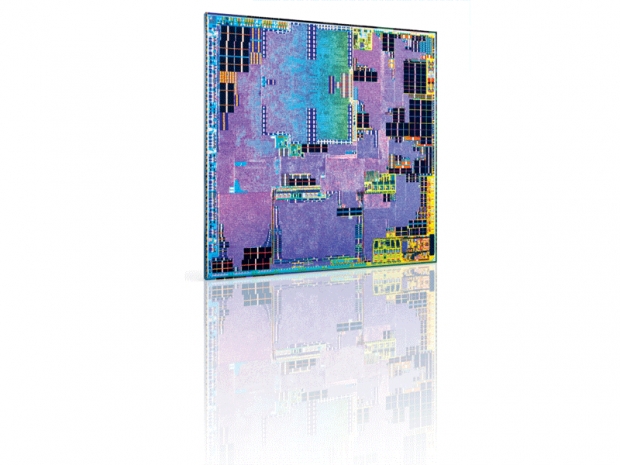It’s been almost a year since Intel announced its partnership with Rockchip, which will play a big role in the SoFIA rollout.
Atom x3 is going after inexpensive phones
While some consumers may be confused by the Atom x3 branding and led to believe that these chips are based on Intel’s cutting edge cores and manufacturing processes, they are anything but.
These smartphone parts are designed on a budget – there’s no fancy manufacturing process, or much in the way of cutting edge technology. The Atom x3 is a simple and affordable workhorse designed for sub-$200 devices, namely phones, phablets and some tablets.

This is a new market for Intel, and it’s the reason the tech giant teamed up with Rockchip. Intel says more than 20 brands will use Atom x3 chips, implementing them in more than 45 designs, but that’s just the start.
Intel will expand the Atom x3 line-up with additional parts, with different cellular modems or features that will make the attractive for IoT devices.
Atom x3 specs - what’s under the bonnet?
The Atom x3 will launch in three flavours, so we should see two 3G variants with dual-core and quad-core processors. The series also includes the Atom x3-C3440, a quad-core with LTE and somewhat beefier graphics.
Judging by the spec, the entry-level Atom x3-C3130 will be reserved for very cheap devices, as it relies on Mali 400 MP2 graphics, LPDDR2 and supports displays up to 1280x800. The runner up Atom x3-C3230RK seems to be leading the market and should end up in commercial products first. The chip sports four CPU cores clocked at 1.2GHz, Mali 450 MP4 graphics, suppor for 1080p displays, DDR3L memory and a few more goodies.

Only the Atom x3-C3440 sports LTE connectivity, along with the latest WiFi and Bluetooth standards. All first-generation SoFIA parts will be manufactured in 28nm, which is actually a step back from the 22nm Bay Trail generation. However, the 28nm node should be good enough for such products, and more importantly, it is significantly cheaper than 22nm, 20nm or 14nm nodes.
Intel’s endgame
Intel tried to make up for its lack of success in mobile through contra-revenue schemes, which are basically subsidies, although Intel doesn’t like to use the s-word.
Last year the company shovelled hundreds of millions into the furnace to sell 46 million Bay Trail SoCs for tablets. This year it seems the focus will be on smartphone parts, namely the Atom x3 series. However, this does not mean that Atom x3 products will be uncompetitive. Judging by the specs, they are designed for very inexpensive devices and should have no trouble competing with Qualcomm and MediaTek parts in this segment.
The use of small and relatively underpowered GPUs, the cheapest currently available manufacturing node for mobile products and the emphasis on the Chinese market are tell-tale signs that Intel is going after volume. Atom x3 chips stand a good chance of ending up in numerous Chinese smartphone designs, provided the price is right.
Even if it’s not, Intel is bound to sweeten the pot with various assistance programmes (you can use the s-word if you wish).




